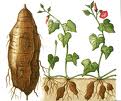Few people have known that sweet potato or camote in Philippine vernacular which has been commonly used as an idiom associated for ‘poor performance’ is a natural source of antioxidant.
In a report by the Food and Fertilizer Technology Center (FFTC) of Taiwan, in mutual partnership with the Rural Development Administration (RDA) of South Korea, they have indicated that the lowly camote is rich in antioxidant such as chlorogenic acid, isochlorogenic acid and caffeic acid.
Antioxidants are phytochemicals that neutralize or counterbalance the free radicals generated by the body during normal metabolism. Free radicals are the most vicious and most toxic byproducts of metabolism.
When these are not neutralized, they can travel through the body cells, disrupting the structures of protein, lipids, carbohydrates and cause of cell damages.
These damages are believed to contribute to aging and degenerative diseases such as cancer, heart diseases, diabetes, stroke, cataract and the likes. The antioxidant in camote are higher in their leaves.
Leaves and tops of camote contain protein, lipids, carbohydrates, calcium, iron, phosphorus and vitamins A and C. They are relatively low in calories and have no fat.
The root crop camote alone is rich in beta carotene, having five times the recommended daily allowance of vitamin A and loaded with potassium as well.
Beta carotene helps protect against heart attack and stroke while potassium helps maintain fluid and electrolyte balance in the body cells as well as normal heart function and blood pressure.
Vitamin A (in the form of beta carotene) and vitamin C are very powerful antioxidant. Vitamin C with healing properties against infection is also beneficial to smokers and people expose to second hand smoke whose vitamin C deposits depleting in their body due to the inhaling of the smoke.
Camote is considered as complete food because of its richness in nutrients and phytochemicals that help promote anti aging and can lead one to healthy life.
The other advantage of camote is that, it can easily be propagated at your own backyard. In less than a month from planting, you can start harvesting its tops and leaves and get the nutritional value that it has brought about to us.
